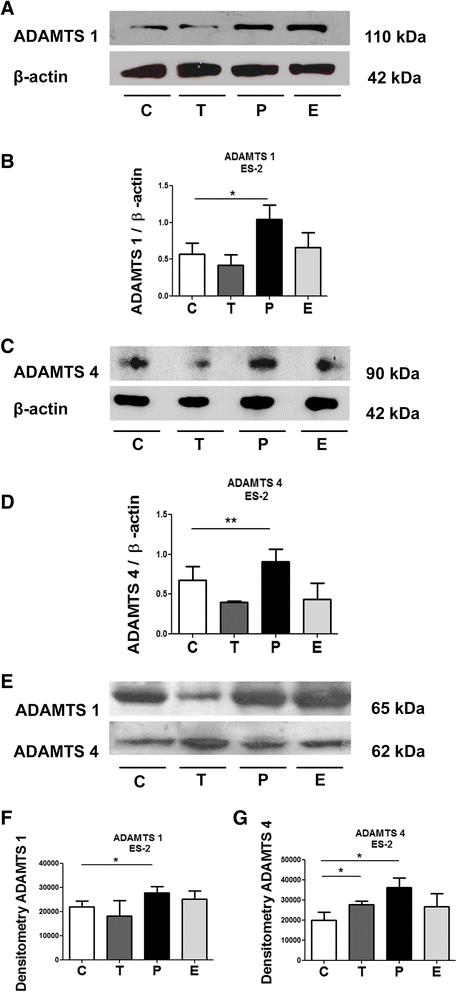Progesterone acts via the progesterone receptor to induce adamts proteases in ovarian cancer cells
- PMID: 26916548
- PMCID: PMC4766681
- DOI: 10.1186/s13048-016-0219-x
Progesterone acts via the progesterone receptor to induce adamts proteases in ovarian cancer cells
Abstract
Background: Ovarian carcinomas, usually associated with sex hormones dysregulation, are the leading cause of gynecological neoplastic death. In normal ovaries, hormones play a central role in regulating cell proliferation, differentiation, and apoptosis. On the other hand, hormonal alterations also play a variety of roles in cancer. Stimulation by sex hormones potentially affects gene expression, invasiveness, cell growth and angiogenesis. Proteases of the "a disintegrin and metalloproteinase with thrombospondin motifs" (ADAMTS) family are secreted by different cell types and become involved in collagen processing, cleavage of the proteoglycan matrix, and angiogenesis. We evaluated whether sex hormones affect ADAMTS 1 and 4 expression in ovarian cancer cells.
Methods: We analysed mRNA and protein levels in human ovarian tumor cells with different degrees of malignancy, NIH-OVCAR-3 and ES-2, that were treated or not with estrogen, testosterone and progesterone.
Results: Our results suggest that progesterone increases ADAMTS protein and mRNA levels in the lysates from ES-2 cells, and it increases ADAMTS protein in the lysates and conditioned media from NIH-OVCAR-3. Progesterone effects were reversed by RU486 treatment.
Conclusion: We conclude that progesterone acts via the progesterone receptor to modulate ADAMTS 1 and 4 levels in ovarian cancer cell lines.
Figures






References
Publication types
MeSH terms
Substances
LinkOut - more resources
Full Text Sources
Other Literature Sources
Research Materials
Miscellaneous

